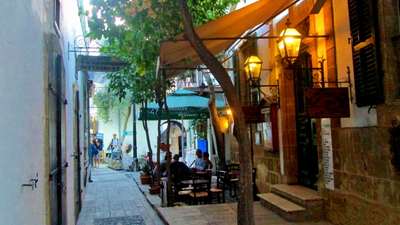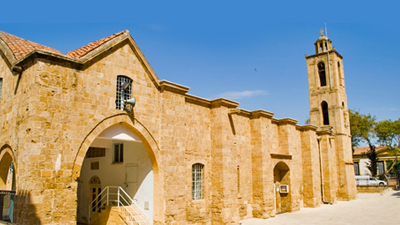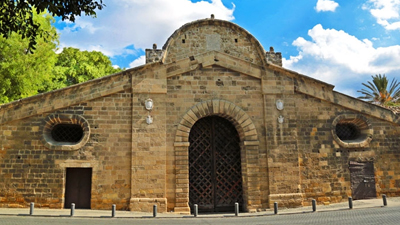Nicosia the Capital of Cyprus
Nicosia is the capital of Cyprus; a status it has enjoyed for 1000 years since the 10th century, though its beginnings date back 5000 years to the Bronze Age. It lies roughly in the
Based in Nicosia are the Government head offices, Diplomatic headquarters and the cultural
Within the large area, encircled by the strong bastion walls that served to protect the town for centuries, are many places of great historic interest.
The central Eleftheria Square links old Nicosia with the elegant modern city that has flourished outside the walls, where hotels, offices restaurants
Lydra Street

This is a paved pedestrian way with shops and restaurants and starts at Eleftheria Square; it is one of the busiest shopping centers of the city.
Cyprus Archaeological Museum

This is the main archaeological Museum of Cyprus and traces the long history of civilization on the island from prehistoric times to the early Christian period. Extensive excavations throughout the island have enriched the collections of the museum considerably and brought Cypriot archaeology to the
Laiki Street

Laiki Geitonia is a traditional neighborhood in the pedestrian area of the ‘walled city’ of Nicosia, opposite the D’Avila moat and 0.3 km from Eleftheria square. Laiki Geitonia contains
Kalopanayiotis Village

The area in which lies the village of Kalopanagiotis been known since ancient times but the village did not exist before the eleventh century. According to Mr. Myriantheas (“Studies”, 1991), during the pre-Christian period due to
Arch. St. John’s Cathedral

The Cathedral was built in 1662 by Archbishop Nikiforos on the site of an earlier building. Since the 18th century the Cathedral has been the place where all Archbishops of Cyprus are consecrated.
Famagusta Gate

The Famagusta Gate is one of the most interesting attractions. The Venetian walls which completely encircle the old city have eleven heart-shaped bastions (which gives them the shape of a hand grenade). There were only three gates to the city in the north, south
